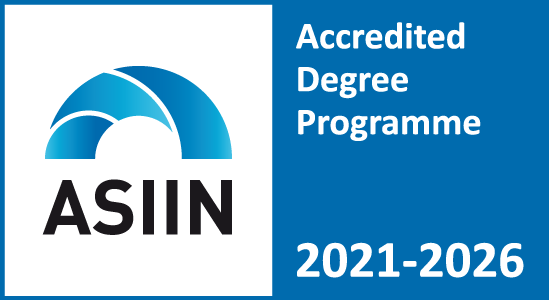| 1. | Course Title | Management of Multimedia Networks and Services | |||||||||||
| 2. | Code | 4ФЕИТ10011 | |||||||||||
| 3. | Study program | 11-IBS, 12-KIT | |||||||||||
| 4. | Organizer of the study program (unit, institute, department) | Faculty of Electrical Engineering and Information Technologies | |||||||||||
| 5. | Degree (first, second, third cycle) | Second cycle | |||||||||||
| 6. | Academic year/semester | I/1 | 7. | Number of ECTS credits | 6.00 | ||||||||
| 8. | Lecturer | Dr Borislav Popovski | |||||||||||
| 9. | Course Prerequisites | ||||||||||||
| 10. | Course Goals (acquired competencies):
After completing the course, the student is expected to have in-depth knowledge of the telecommunications management networks: architectures, resources and services; be competent in the use of various technics and tools for network performance improvement and optimization; be able to perform scientific research work in the field of multimedia networks and services. |
||||||||||||
| 11. | Course Syllabus:
Telecommunications Management Networks: concepts and tools. Telecommunications services management. SLA and QoS management. Multimedia Broadcasting: MPEG Transport Stream, DVB Standards. Multimedia Services and Protocols: QoS management in IP Networks, QoS for streaming services; Video Compression Standards and Protocols. Radio Resource Management, mobility management in wireless networks. Cooperative coexistence of heterogeneous wireless networks. Mobile radio access network planning and optimization. LTE, LTE-Advanced, 5G, 6G mobile networks. Streaming and Over-the-Top TV, HTTP Live Streaming, HTTP – DASH, Content Delivery Networks. Media content and platform provider examples. Delivery video, audio and Rich Internet Applications over private and public IP networks to the end customer equipment: laptop, mobile phone, IPTV/OTT set-top box, smart TV. Multimedia Cloud systems. |
||||||||||||
| 12. | Learning methods:
Lectures; self-learning; literature research; presentations. |
||||||||||||
| 13. | Total number of course hours | 180 | |||||||||||
| 14. | Distribution of course hours | 3 + 3 | |||||||||||
| 15. | Forms of teaching | 15.1 | Lectures-theoretical teaching | 45 hours | |||||||||
| 15.2 | Exercises (laboratory, practice classes), seminars, teamwork | 45 hours | |||||||||||
| 16. | Other course activities | 16.1 | Projects, seminar papers | 30 hours | |||||||||
| 16.2 | Individual tasks | 30 hours | |||||||||||
| 16.3 | Homework and self-learning | 30 hours | |||||||||||
| 17. | Grading | ||||||||||||
| 17.1 | Exams | 30 points | |||||||||||
| 17.2 | Seminar work/project (presentation: written and oral) | 50 points | |||||||||||
| 17.3. | Activity and participation | 20 points | |||||||||||
| 17.4. | Final exam | 0 points | |||||||||||
| 18. | Grading criteria (points) | up to 50 points | 5 (five) (F) | ||||||||||
| from 51 to 60 points | 6 (six) (E) | ||||||||||||
| from 61 to 70 points | 7 (seven) (D) | ||||||||||||
| from 71 to 80 points | 8 (eight) (C) | ||||||||||||
| from 81 to 90 points | 9 (nine) (B) | ||||||||||||
| from 91 to 100 points | 10 (ten) (A) | ||||||||||||
| 19. | Conditions for acquiring teacher’s signature and for taking final exam | Regular attendance at classes and completed seminar work. | |||||||||||
| 20. | Forms of assessment | Through project assignments, tests and seminar work. | |||||||||||
| 21. | Language | Macedonian and English | |||||||||||
| 22. | Method of monitoring of teaching quality | Self-evaluation | |||||||||||
| 23. | Literature | ||||||||||||
| 23.1. | Required Literature | ||||||||||||
| No. | Author | Title | Publisher | Year | |||||||||
| 1. | Hans W. Barz and Gregory A. Bassett | Multimedia Networks: Protocols, Design and Applications | Wiley | 2016 | |||||||||
| 23.2. | Additional Literature | ||||||||||||
| No. | Author | Title | Publisher | Year | |||||||||
| 1. | P. Latkoski, B. Popovski | Wireless Communications and Networks – Recent Advances | InTech – Open Access Publisher | 2012 | |||||||||
| 2. | Mani Subramanian | Network Management: Principles and Practices | Prentice Hall | 2012 | |||||||||



